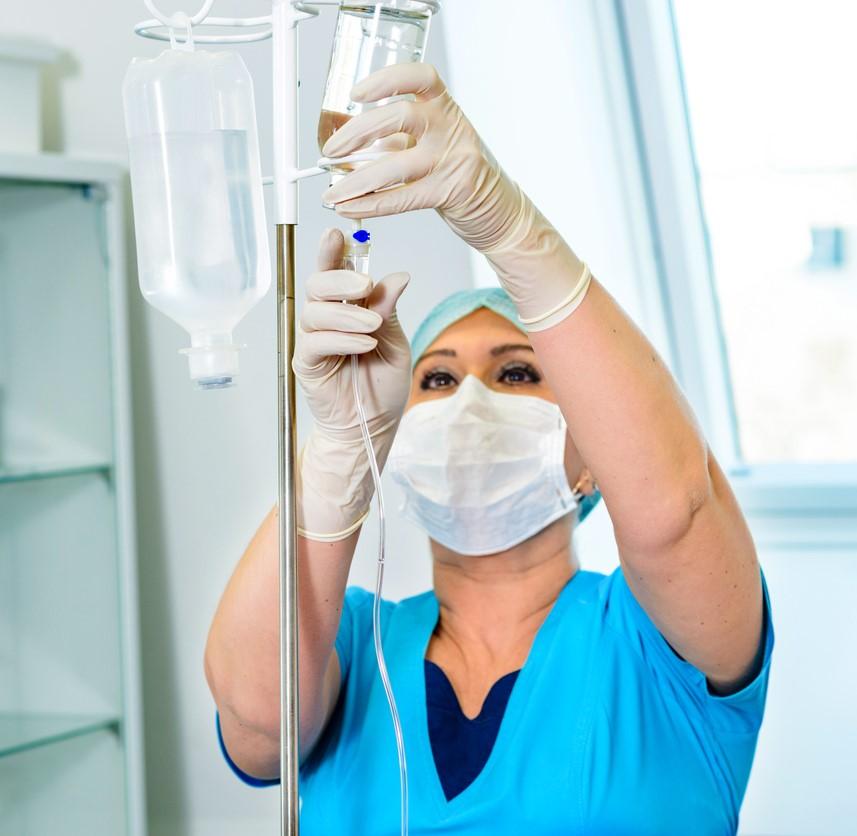A prospective meta-analysis of international randomized clinical trials (RCTs) of convalescent plasma for the treatment of hospitalized COVID-19 patients finds no clinical benefit in most cases.
Convalescent plasma, considered an experimental treatment by the US Food and Drug Administration (FDA), is donated by COVID-19 survivors in the hope that recipients with current infections benefit from the anti–SARS-CoV-2 antibodies. On Dec 28, 2021, the FDA restricted the use of convalescent plasma to patients with impaired immune systems.
Mild to moderately ill and mechanical ventilation not needed
In the study, published yesterday in JAMA Network Open, a team led by NYU Grossman School of Medicine researchers evaluated and modeled individual patient data in real time from eight RTCs enrolling 2,341 participants from May to August 2020. The RCTs were conducted in the United States, Belgium, Brazil, India, the Netherlands, and Spain; two were double-blinded, and six were open-label, while three were single-site and five were multicenter.
Participants, who were hospitalized but did not require mechanical ventilation, were randomly assigned to receive either COVID-19 convalescent plasma (CCP, 1,231) or control (standard care or placebo,1,138). Primary outcome data were monitored until April 2021.
Median patient age was 60 years, 35.7% were women, and more than half were randomized 4 to 10 days after symptom onset. Common underlying conditions included diabetes (33.6%), cardiovascular disease (42.5%), and pulmonary disease (11.8%).
Median score on the 11-point ordinal World Health Organization (WHO) scale (score of 7 or higher indicating severe outcomes) was 3, and the cumulative odds ratio (OR) was 0.94 (95% credible interval [CrI], 0.74 to 1.19; posterior probability of OR less than 1, 71%).
Some subgroups may derive modest benefit
The unadjusted death rate through 14 days was 8.6% in the control group and 6.7% in the CCP group; by 28 days, death rates were 13.6% and 10.9%, respectively.
Overall, 352 patients (15%) scored 7 or higher on the WHO scale (OR, 0.94; 95% Crl, 0.69 to 1.30; posterior probability of OR less than 1, 65%). After adjustment for baseline covariates, the ORs for death were 0.88 at 14 days (95% CrI, 0.61 to 1.26; posterior probability of OR less than 1, 77%) and 0.85 at 28 days (95% CrI, 0.62 to 1.18; posterior probability of OR less than 1, 84%).
Treatment effect sizes varied across a range of baseline characteristics, which the authors said suggests that convalescent plasma was more than minimally associated with benefit in some subgroups, including those with a baseline WHO score of 4, blood type A, and underlying diabetes and cardiovascular and lung disease.
"This meta-analysis found no association of [convalescent plasma] with better clinical outcomes for the typical patient," the researchers wrote. "These findings suggest that real-time individual patient data pooling and meta-analysis during a pandemic are feasible, offering a model for future research and providing a rich data resource."
"Our results show that, overall, patients hospitalized with COVID-19 may derive modest benefit from convalescent plasma, with some patient subgroups benefiting more than others," lead investigator Andrea Troxel, ScD, said in an NYU press release.
"Patients with co-existing disease were most likely to show improvement from convalescent plasma, probably because they have the most difficulty producing antibodies to fight their infection," she added. "The infused plasma boosts their body's ability to fight the virus, but only in the early stage of the disease and before the illness overwhelms their body."
Troxel said that she expects the benefit or lack of benefit from convalescent plasma to become clearer as more data from the RCTs becomes available, because the data from individual trials are too limited to show the therapy's overall effect on different groups of patients.
Coinvestigator Eva Petkova, PhD, said the team is using the study data to develop a scoring system of patient descriptors such as age, COVID-19 stage, and underlying medical conditions to enable clinicians to identify patients most likely to benefit from convalescent plasma. "Our treatment benefit index is designed to serve as a quick and effective tool for physicians to use in deciding when to administer convalescent plasma for COVID-19," she said.





















